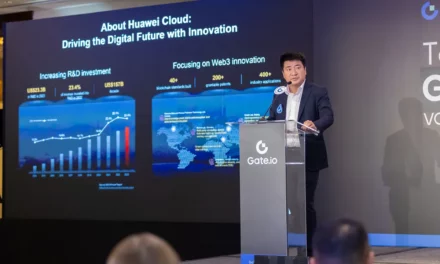
Ericsson: How is intelligence transforming telecom? Five benefits that reveal the full value of AI

By Zeljka Lemaster, Senior Director Strategic AI Engagements at Ericsson, Thomas Kinnman, AI and Automation development at Ericsson, and Andres Laya, Strategic Marketing Director for AI
Artificial intelligence (AI) is beyond disruptive. Arguably the second biggest leap in the technological revolution since the widespread adoption of computers, it is already transforming industries worldwide – and even creating new ones. It seems every day our human minds are blown away by the increasingly impressive progress of this omnipotent genius, with its poetry skills, intelligent and polite customer service capabilities and astonishing artwork. Let’s face it – love it or hate it, AI has arrived, and it’s here to stay. So, what does that mean for networks?
As networks are expanding in both scope and areas of usage, recent and emerging services are requiring always-on performance, ultra-reliability and low latency, high levels of security plus a network with the capability to support many diverse use cases. Networks are facing ever-increasing demands and requirements and rising expectations – from improving performance and capacity to lowering energy consumption.
Beyond this, the network must also deliver a great experience for each service and user. The demands being placed on service assurance, experience measurement and insights into customer expectations are enormous – and the communication service provider (CSP) will need every part of their business working together towards this goal to succeed.
At the same time, the evolution to 5G, IoT and edge computing means the mobile ecosystem and networks are becoming ever more complex. We’re at a point where our networks simply must deliver value beyond just connectivity.
Fortunately, with the power of data and intelligence enabling advanced automation services, this is now possible. AI and machine learning are already proving their worth, delivering significant benefits to telecom operators in several areas.
The five key benefits of AI for telecom networks
1. Effectiveness
The niche in which AI truly thrives is in automating repetitive tasks, acting quickly and efficiently, and freeing up staff or resources to be used in other areas. By taking over routine tasks and enhancing network efficiency, AI-driven automation can optimize network operations and reduce costs.
With decades of experience managing network systems and data, learning from trends or outages, and detecting anomalies, Ericsson has the in-depth knowledge to build and train AI models to analyze network data and traffic patterns. These algorithms can drastically improve the capacity planning and optimization of the full network. In operations, AI can more accurately pinpoint the root cause of issues, reducing the time to resolution, as well as predict and prevent degradation or outages, reducing or avoiding costly downtime. They can even enable self-healing networks, reducing (and eventually removing) the need for human intervention.
2. Performance boosting
As networks grow increasingly complex, it can be a challenge to maintain the high network performance that customers expect. By leveraging AI, communication service providers (CSPs) can manage increased complexity, improving the customer experience while maintaining high network performance.
By analyzing network traffic patterns and optimizing resource allocation, AI can boost throughput and reliability. Through the allocation of dynamic network and computational resources to areas experiencing high service demand, and by optimizing the routing of data to reduce congestion, they can improve bandwidth and latency.
3. Energy and sustainability
With energy costs rising, the implementation of net-zero targets, plus the capacity demands on networks increasing, energy usage has become of crucial importance when it comes to sustainable operations. While we may look forward to a 6G future with zero-energy devices, AI can help combat this issue today, maximizing network utilization without impacting the performance of energy-saving features. AI can also act autonomously on real-time – or even predicted – traffic, helping CSPs reduce their energy consumption and lower their carbon footprint, contributing to sustainability goals and lowering operating costs.
4. Trustworthiness and security
We always approach intelligent technology with the awareness that trust and ethics in AI are central to its success. Therefore, explainability and transparency must be built into the systems, ensuring sufficient information is always on hand to explain, improve or fix issues, as well as assurances to check that the data coming into the system is safe, not skewed towards a particular outcome that will cause AI bias, and to protect against any attacks.
Security and compliance can often be areas of concern when it comes to AI. But trustworthy AI algorithms can actually reduce security and compliance issues. By detecting and preventing security threats, such as cyberattacks and fraud, AI can help CSPs to protect their networks and their customers’ data, as well as demonstrate their commitment to responsible business practices. AI algorithms can also be used for fraud detection and prevention in areas like billing and subscriber management, helping CSPs reduce losses and improve their financial performance.
5. New business opportunities
By using AI in their networks to gain insights from the data and behavioral patterns at play, CSPs have a unique opportunity to gain a deeper understanding of their customers and their needs. It enables them to identify new business opportunities and offer targeted, personalized services to their customers, as well as to act proactively to meet their consumers’ demand based on their intent. When employed effectively, these services can increase revenue and provide a competitive edge in the market.
Value that grows over time
AI can bring impressive benefits and outcomes, but it can also introduce other complexities into how you manage, maintain, and extract that value. MLOps environments will be key to scale AI from innovation to industrialized operation, increasing productivity, and reducing time to value. It’s important to remember that AI is not a ‘one-and-done’ project – as the saying goes, you’ll only get out as much as you put in.
But the value AI brings is not just immediate. If you maintain it properly, you’ll see value growing with the system. The model will continue to learn and gain more data as it goes. With proper feedback, systems that are built to self-train and continuously improve will continue to deliver better results, and greater business value, over time















































